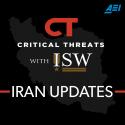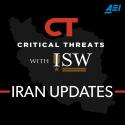The Iranian regime is likely escalating against prominent Sunni cleric Moulana Abdol Hamid. Social media users continued to document a heightened security presence in Zahedan, Sistan and Baluchistan Province ahead of Abdol Hamid’s weekly Friday prayer sermon and protests throughout the city. Security personnel within the past several days have reportedly blocked all roads leading to Zahedan, established new checkpoints restricting movement into the city, and detained custodians of the mosque where Abdol Hamid delivers his sermons . Social media users have additionally reported mass arrests and internet restrictions. Uncorroborated reports claim that the regime also deployed to the Zahedan airport security forces not normally assigned to the airport, alleging that Iranian officials had lost confidence in the local Basij members formerly entrusted with securing the airport. CTP cannot verify this report. An advisor to Abdol Hamid attributed the intensified security environment in Zahedan to LEC Commander Ali Reza Radan, whom Supreme Leader Ali Khamenei appointed on January 7. CTP previously assessed that Khamenei likely appointed Radan, a hardline member of the IRGC with extensive experience in crushing political dissent, as law enforcement commander partly due to dissatisfaction with the LEC’s response to the Mahsa Amini protest movement.



